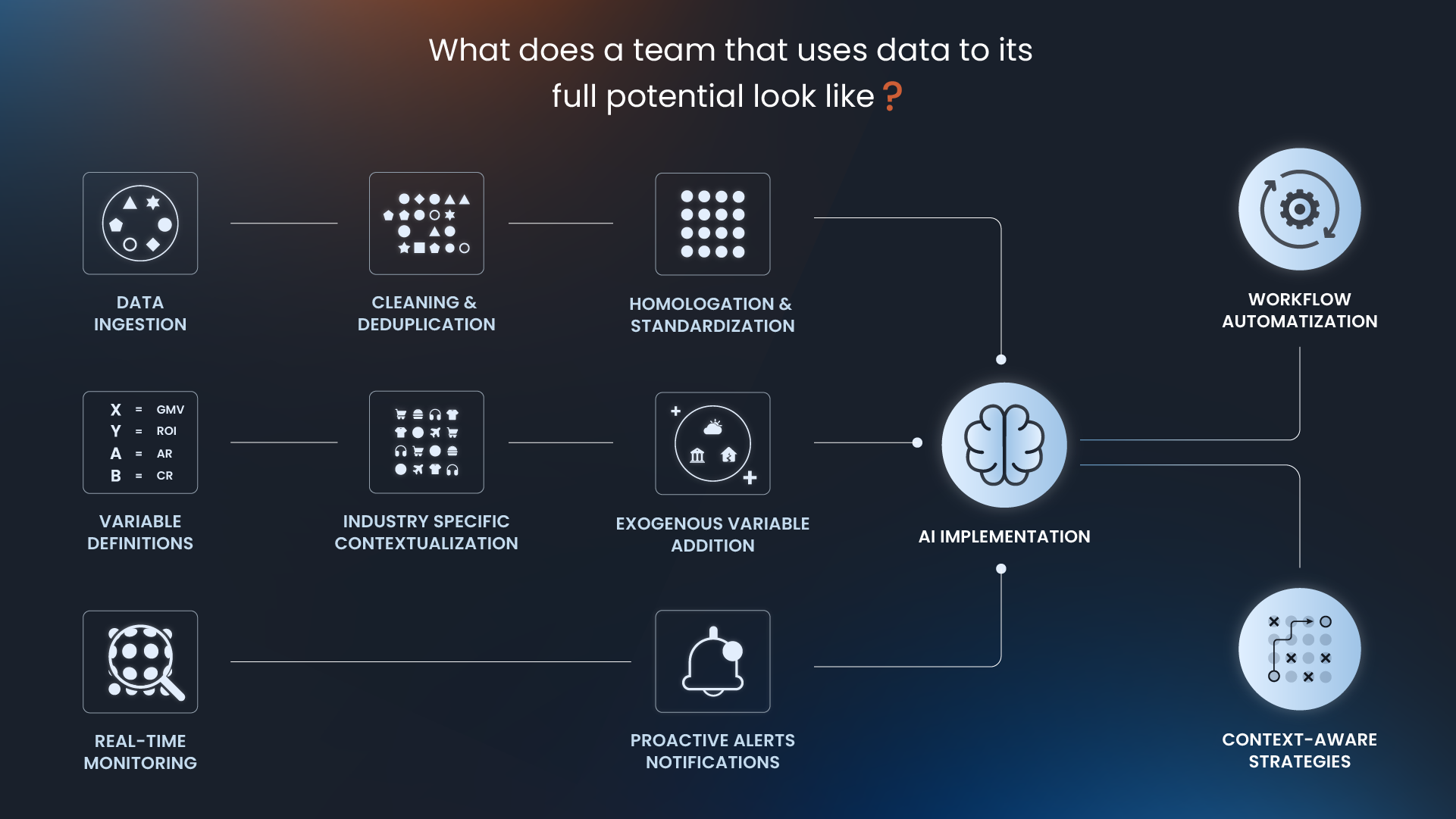
Most companies today are swimming in payments data—but very few are actually using it to drive business outcomes. Behind every transaction is a story: what the customer wants, where friction occurs, and how money moves through your systems. Yet despite the strategic value of this data, many organizations still treat it as an operational afterthought.
This gap between potential and reality isn’t just a missed opportunity—it’s a competitive risk. Teams lose time cleaning messy data, AI tools deliver shallow insights, and decisions are made too late to matter. In a fast-moving market, the ability to act on real-time payment insights can mean the difference between leading and lagging.
Still, despite years of investment in analytics tools, data teams continue to face the same obstacles: fragmented systems, generic AI, and reactive operations. Instead of driving growth, they end up playing catch-up.

Top-performing companies are solving these problems with a new model—one built on three key principles: unification, contextualization, and real-time execution. It’s not just about collecting data. It’s about activating it.
The first step is data unification. This means bringing together payments, orders, identity, and even third-party data into a single, clean, and standardized ecosystem. Leading companies invest in robust pipelines for data ingestion, followed by deduplication, homologation, and standardization across variables.
But it’s not just about cleaning up. It’s also about aligning on definitions. What exactly counts as GMV, ROI, AR, or CR? When everyone uses the same logic and language, organizations can finally stop arguing over numbers and start using them.
A unified foundation doesn’t just save time—it unlocks trust. When finance, operations, product, and growth teams all rely on a single source of truth, collaboration becomes possible. Decisions move faster. Results become measurable.
Once data is unified, the next step is contextualization. This is where the real value begins to emerge.
High-performing organizations go beyond simple metrics. They enrich their data with industry-specific variables, historical patterns, and even exogenous data sources like seasonality, economic indicators, or geographic trends.
With the right context, artificial intelligence can move from generic suggestions to tailored, relevant insights. Instead of telling you that conversion rates dropped, a context-aware system can tell you why—and what to do about it. Maybe it was a failed payment retry logic. Maybe it was a misalignment between inventory and demand. The point is, you know where to act.
It’s not enough to spot an opportunity—you have to act on it instantly. That’s why the final principle in this model is real-time execution.
Companies that get this right don’t just rely on dashboards. They build systems for real-time monitoring, automated alerts, and AI-driven workflows that execute without human bottlenecks.
If a transaction is likely to fail, the system retries it before the customer notices. If fraud patterns emerge, dynamic rules are adjusted automatically. If a region underperforms, tailored incentives are triggered within hours—not days.
This shift from reactive to proactive operations creates a powerful flywheel. Data no longer just informs strategy—it becomes strategy.

In a world where every transaction is a datapoint, payments are no longer just an operational function—they’re a source of strategic intelligence.
The companies that lead today aren’t necessarily the ones with the most data. They’re the ones who know how to use it. And the future belongs to those who can transform payments from a cost center into a growth engine.
So the question is no longer whether you have the data.
It’s whether you’re ready to use it.

The first step is an honest audit. Ask yourself:
If the answer to any of those questions is no, it may be time to rethink your approach.
Invest in tools that don’t just analyze, but activate. Seek out AI that understands the nuances of your business. And build a culture that doesn’t settle for hindsight, but moves with foresight.
